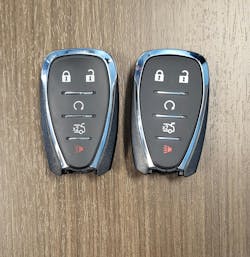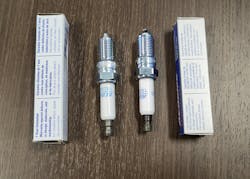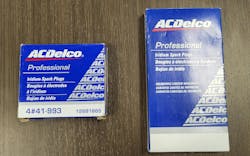Protecting your customers from counterfeit auto parts
Counterfeit auto parts cause more than just inconvenience for consumers and auto technicians; they can harm vehicles, and if used during a crash, lead to serious injury or even death for drivers and passengers. In the age of the internet, the illegal trade of counterfeit parts has increased year over year.
In 2024 alone, U.S. Customs seized more than 211,000 counterfeit auto parts, nearly double the amount from the previous year. Any auto part can be counterfeited, including critical safety components such as airbags and seatbelt straps, as well as common parts like spark plugs and fuel injectors.
Auto technicians play a crucial role in identifying counterfeit parts, sourcing parts from legitimate sources, and educating their customers on the dangers of fraudulent parts.
Common Culprits and Catastrophic Consequences
While any part can be counterfeited, some are more common than others. Technicians and consumers should be particularly wary of safety parts, including airbags, brake pads, and ADAS sensors. Engine parts are also commonly counterfeited, including fuel injectors, sparkplugs, and fuel filters.
Counterfeit parts are prone to failure because they are merely copies of a part’s appearance without knowledge of the manufacturer’s specific design parameters or the design specifications. Without this info, these parts do not ‘fit’ properly, are made with inferior materials, and are not properly tested, leading to failure and potential harm.
For instance:
- Counterfeit fuel injectors can damage engines and other components, including catalytic converters, leading to costly repairs. They can also cause dangerous fuel leaks, leading to fires and high-speed accidents.
- Fake brakes and wheels reduce stopping power, wear unevenly, and can even shatter, causing loss of control.
- Counterfeit airbags deploy incorrectly or not at all, failing to protect an occupant or even harming them. NHTSA identified five known cases of death or serious injury in 2023 and 2024 due to metal shrapnel released from defective airbags.
⠀
Your Guide to Identification
Protecting your shop and customers starts with smart sourcing. When purchasing parts online, prioritize manufacturers' websites or highly reputable sellers to reduce the chance of acquiring a counterfeit. While large online stores are cracking down on counterfeit products, sellers of fakes are savvy and can make product pages look nearly identical to an official product.
Always be wary of extreme price differences. If a deal seems too good to be true, it almost certainly is, and that part is likely a counterfeit. Understanding this can be helpful when talking to customers who claim they have seen cheaper prices for a part online.
Counterfeit parts also appear on seemingly reputable platforms. To ensure the part you are holding is genuine, inspect it for inconsistencies in font and branding, odd or incorrect placement of warranty information, and differences in packaging dimensions that do not align with what is listed on the website.
If you are still in doubt about the legitimacy of your part, do not hesitate to contact the manufacturer. Many manufacturers provide contact information on their websites where you can submit a request for more information regarding purchased parts. Most have teams dedicated to identifying counterfeit parts and removing them from circulation. By staying vigilant and informed, auto technicians can be critical players in curbing the flow of counterfeit auto parts, keeping motorists safe and their vehicles operating efficiently.
Counterfeit key fob (left) and genuine GM key fob (right). There is a difference in the thickness of the imprint.
Genuine A/C Delco sparkplug (left) and counterfeit sparkplug (right). There are many noticeable differences, including the font size and copy (writing) on the packaging.
Genuine spark plug packaging (left) and counterfeit spark plug packaging (right). The counterfeit packaging is missing the part number.
About the Author

Bob Stewart
Bob Stewart is the president of Automotive Anti-Counterfeiting Council, an alliance of North American automakers dedicated to increasing awareness of, and eliminating, counterfeit automotive components that could harm U.S. consumers. Since 2013, Bob has also been the Aftermarket Service Support and Global Brand Protection Manager at General Motors.



